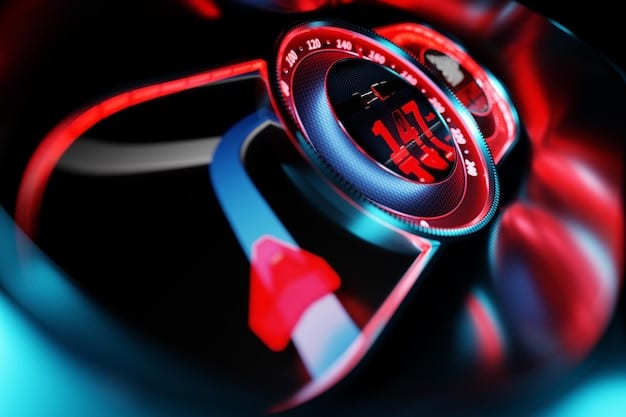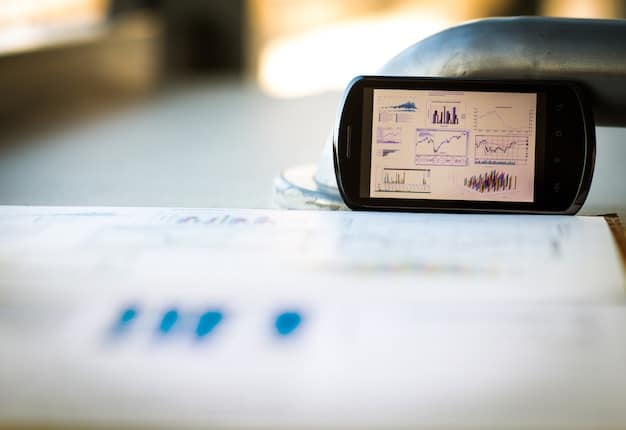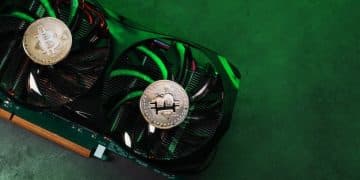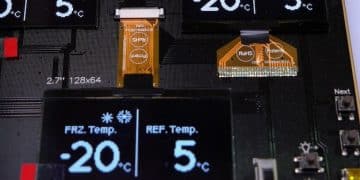AMD Radeon Adrenalin: Overclocking for Peak Performance

Mastering the overclocking tools within the AMD Radeon Adrenalin Edition software can significantly boost your graphics card’s performance, offering gamers and enthusiasts enhanced frame rates and smoother gaming experiences.
The AMD Radeon Adrenalin Edition software suite offers a comprehensive set of tools for optimizing your graphics card’s performance. One of the most powerful features is the ability to overclock your GPU, pushing its clock speeds beyond the factory settings to achieve higher frame rates and improved responsiveness in games and other graphically intensive applications. Let’s dive into **AMD Radeon Adrenalin Edition: Mastering the Overclocking Tools for Maximum Performance Gains**.
Understanding Overclocking with AMD Radeon Adrenalin
Overclocking, simply put, is the process of increasing the clock speed of your graphics card beyond its factory-set limits. This can lead to noticeable performance gains, but it’s essential to understand the basics and potential risks involved.
The Adrenalin Edition software provides a user-friendly interface for overclocking, making it accessible even to those who are new to the process. It offers various tools and monitoring features to help you safely and effectively push your GPU’s limits. This section will clarify the fundamental concepts and explain the benefits and risks associated with overclocking your AMD Radeon graphics card.
What is GPU Overclocking?
GPU overclocking involves increasing the operating frequency of your graphics processing unit (GPU). The Adrenalin software permits this adjustment via the tuning tab, allowing for higher clock speed for gaming and other graphically intensive applications.
Why Overclock Your GPU?
The main reason for overclocking your GPU is to improve performance. This translates to higher frame rates in games, smoother playback of high-resolution videos, and faster rendering times in creative applications. Overclocking can also breathe new life into older cards, keeping them competitive with newer hardware.
However, before you start overclocking, you should be aware of the potential downsights. This allows you to make educated decisions about your hardware. Key considerations and components are:
- Stability: Overclocking can introduce instability, leading to crashes or graphical glitches.
- Heat: Increased clock speeds generate more heat, potentially damaging your GPU if cooling is inadequate.
- Warranty: Overclocking might void your warranty, so check your manufacturer’s policy beforehand.
- Power Supply: Be sure your power supply can handle the increased power draw.
Carefully balance the increase in performance with stability, heat generation, and power considerations to ensure that your components are safe during the process.

Navigating the AMD Radeon Adrenalin Interface
The AMD Radeon Adrenalin Edition software provides a centralized hub for managing your graphics card settings, including overclocking. Understanding its interface is crucial before you begin tweaking any settings.
The software is designed with accessibility in mind, but it’s still important to familiarize yourself with all of the interface’s components. This ensures a seamless and enjoyable overclocking experience. The primary sections include:
Accessing the Overclocking Tools
To access the overclocking tools, open the Adrenalin Edition software and navigate to the “Performance” tab. Here, you’ll find options for “Tuning,” which allows you to manually adjust various GPU settings. You can choose between preset profiles (such as “Quiet,” “Balanced,” and “Turbo”) or create a custom profile for manual overclocking.
Understanding the Key Settings
Within the “Tuning” section, several key settings influence overclocking performance:
- GPU Clock: Adjusts the core clock speed of your GPU. Increasing this will boost performance but also increases heat and power consumption.
- Memory Clock: Modifies the speed of your graphics card’s memory. Overclocking the memory can improve performance in memory-intensive applications.
- Voltage Control: Allows you to increase the voltage supplied to the GPU, providing more headroom for overclocking. Use this with caution, as excessive voltage can damage your card.
- Fan Speed: Controls the speed of your GPU cooler’s fan. Increasing the fan speed will improve cooling but also increases noise levels.
With an understanding of the interface, the user is ready to begin tweaking the graphics card’s settings. This allows a stable, reliable, and effective overclocking experience with Adrenalin Edition.
Step-by-Step Guide to Overclocking Your AMD GPU
Now that you understand the basics and know your way around the Adrenalin interface, let’s walk through the actual overclocking process. Remember to proceed with caution and make small, incremental adjustments, monitoring your GPU’s temperature and stability at each step.
Overclocking is a process that requires taking steps to ensure stability. In this section, we present a process that will allow you to overclock with stability, while being aware of some of the main benchmarks along the way.
Preparation
Before you start overclocking, ensure you have the necessary tools and information:
- Monitoring Software: Download software like HWMonitor or MSI Afterburner to monitor GPU temperature and clock speeds.
- Benchmark Tool: Use a benchmark like 3DMark or Unigine Heaven to test the stability and performance of your overclock.
- Stock Settings: Note down your GPU’s default clock speeds and voltage so you can revert to them if needed.
Incremental Adjustments
The key to safe overclocking is to make small, incremental adjustments, testing stability after each change:
- Increase GPU Clock: Increase the GPU clock speed by 10-20 MHz. Apply the setting and run a benchmark to test stability.
- Increase Memory Clock: If the GPU clock is stable, increase the memory clock by 20-30 MHz and retest.
- Adjust Voltage (Optional): If you encounter instability, slightly increase the voltage (by 0.01-0.02V). Be very careful with voltage adjustments, as excessive voltage can damage your GPU.
- Monitor Temperature: Keep a close eye on your GPU temperature. If it exceeds 80°C, reduce your overclock or increase your fan speed.
Stability Testing
After each adjustment, run a benchmark for at least 30 minutes to ensure stability. Look for artifacts, crashes, or freezes. If you encounter any issues, reduce your overclock until the system is stable.
Be patient during the process. Taking time for stability will allow you an enjoyable gaming experience for a longer amount of time.
Advanced Overclocking Techniques and Tips
Once you’re comfortable with the basic overclocking process, you can explore more advanced techniques to squeeze even more performance out of your AMD Radeon graphics card. One of the things that an informed overclocker must understand, is how the various settings interact with each other.
Advanced overclocking is for experienced users who have a firm understanding of their system. In this section, we’ll describe some of the most popular and useful advice.
Power Limit Adjustments
The power limit setting determines how much power your GPU is allowed to draw. Increasing the power limit can provide more headroom for overclocking, especially if you’re running into power throttling issues.
Custom Fan Curves
Creating a custom fan curve allows you to fine-tune your GPU’s cooling performance. You can set the fan speed to automatically increase as the GPU temperature rises, keeping your card cool without unnecessary noise.
Using AMD WattMan
AMD WattMan is a built-in tool within the Adrenalin Edition software that provides advanced monitoring and control over your GPU’s performance. It allows you to customize voltage curves, adjust fan speeds, and monitor various parameters in real-time. WattMan can also save and load custom profiles, making it easy to experiment with different overclocking settings.
Optimizing Game Settings
Overclocking is just one piece of the puzzle. Optimizing your game settings can also have a significant impact on performance. Experiment with different graphics settings to find the right balance between visual quality and frame rates. Lowering some settings, such as shadows or anti-aliasing, can often provide a noticeable performance boost without significantly impacting the overall visual experience.
Remember that tweaking the GPU is only one aspect of overclocking. Finding the balance of heat output as well as the stability of the output is something of an art.

Troubleshooting Common Overclocking Issues
Even with careful planning and execution, overclocking can sometimes lead to problems. Knowing how to troubleshoot common issues is essential for a successful overclocking experience.
Knowing how to solve some of the possible problems helps to facilitate a smooth and enjoyable overclocking experience.
Crashes and Freezes
Crashes and freezes are often the most common signs of an unstable overclock. If you experience these issues, reduce your overclock or increase the voltage slightly. Also, ensure that your GPU temperature is within safe limits.
Artifacts and Visual Glitches
Artifacts, such as strange patterns or distortions on the screen, indicate that your GPU is overheating or that your memory is overclocked too high. Reduce your memory clock speed or improve your cooling.
Driver Issues
Sometimes, overclocking can expose underlying driver issues. Ensure that you have the latest drivers installed for your graphics card. If problems persist, try rolling back to an older driver version.
When troubleshooting, document your changes and use a systematic approach to pinpoint the root cause of any issues. By working through each of the major bottlenecks, it turns a complicated process into a smooth and reproducible experiment.
Maintaining System Stability and Longevity
Overclocking, while offering performance benefits, can also put additional stress on your components. To ensure the stability and longevity of your system, it’s crucial to implement proper maintenance practices.
Stability of the overclock and lifespan of the gaming rig are important. Here are some suggestions.
Regular Cleaning
Dust buildup can significantly impede cooling performance. Regularly clean your PC’s components, including the GPU, to ensure proper airflow and heat dissipation. Use compressed air to remove dust from hard-to-reach areas.
Monitoring Temperatures
Keep a close eye on your GPU temperature, even when you’re not actively overclocking. High temperatures can degrade your hardware over time. Use monitoring software to track temperatures and adjust fan speeds as needed.
Periodic Re-Testing
Over time, changes in ambient temperature or system configuration can affect the stability of your overclock. Periodically re-test your overclock to ensure that it remains stable and adjust settings as needed.
Good maintenance practices can also have the side benefit of improving the gaming experience by lowering fan noise.
| Key Point | Brief Description |
|---|---|
| 🚀 Adrenalin Edition | Software suite for AMD graphics cards, offering overclocking tools. |
| 🌡️ Temperature Monitoring | Crucial for preventing GPU damage during overclocking. |
| ⚙️ Incremental Adjustments | Make small tweaks and test stability to avoid instability. |
| 🎮 Game Settings | Optimize in-game graphics settings for balanced performance alongside overclocking. |
FAQ
▼
The AMD Radeon Adrenalin Edition is a comprehensive software suite designed to enhance the performance of AMD Radeon graphics cards, providing tools for overclocking, monitoring, and optimizing gaming experiences to make them smoother.
▼
Open the Adrenalin Edition software, go to the “Performance” tab, and select “Tuning.” Here, you can manually adjust settings like GPU clock, memory clock, voltage, and fan speed to overclock your GPU effectively.
▼
Overclocking can lead to instability, system crashes, overheating, and potential hardware damage. It’s crucial to make small adjustments and monitor temperatures to mitigate these risks effectively.
▼
After each adjustment, run benchmarks like 3DMark to test stability. Also, monitor temperatures closely and watch for artifacts or crashes, which indicate an unstable overclock setting. When in doubt: back it off.
▼
AMD WattMan, found in the “Tuning” section, provides advanced real-time monitoring and control over your GPU’s performance. Customize voltage curves, adjust fan speeds, and save custom profiles for optimal performance.
Conclusion
Mastering the overclocking tools within the AMD Radeon Adrenalin Edition can unlock significant performance gains in your graphics card, improving frame rates and enhancing your overall gaming experience. By following the steps and techniques outlined in this guide, you can safely and effectively push your GPU’s limits while maintaining system stability and longevity.



